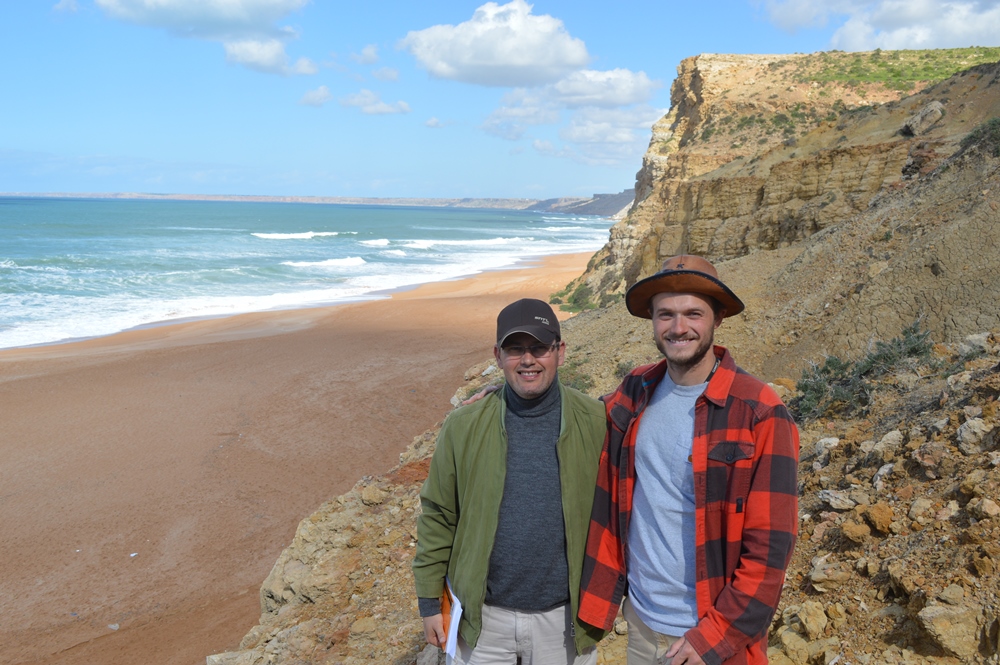Tim Luber
PhD Student
PhD project: "Characterisation of Early Cretaceous Depositional Systems along the Atlantic Passive Margin, Morocco."

PhD Student (Now Geologist at Statoil, Norway)
PhD Project: “INTEGRATED ANALYSIS OF LOWER CRETACEOUS STRATIGRAPHY AND DEPOSITIONAL SYSTEMS: THE ESSAOUIRA-AGADIR BASIN OF MOROCCO.”
Supervisors: Prof. J. Redfern, Dr. S. Schröder, Dr. L. Bulot
Undergraduate
I graduated from the Freie Universität Berlin in Jan 2014 with an MSc in Geology. Focus during the BSc. and MSc. thesis was on sedimentology and geochronology of the Archean Moodies Group in the Barberton Greenstone Belt (BGB) in South Africa.
Relevant publications:
https://doi.org/10.1016/j.precamres.2013.03.021
https://doi.org/10.1016/j.precamres.2016.01.011
PhD
My research in the North Africa Research Group (NARG) started in 2014, and was focused on integrated analysis of Lower Cretaceous stratigraphy in the Essaouira Agadir Basin (EAB) in Morocco. The work combined various stratigraphic approaches. I had great supervision during the work in Manchester but also the flexibility to shape the design of the project substantially. This included many field seasons, building a biostratigraphic expertise team. NARG has a unique setup and informal working environment. The research group is very well connected, making it easy to exchange ideas and opening all the opportunities I wished for during a PhD study.
The main deliverables from the PhD are:
- A biostratigraphic framework based on ammonoids for the upper Barremian to lowermost Albian in the Essaouira-Agadir Basin and Northwest Africa
- An integrate bio-chronostratigraphic framework and sequence stratigraphic interpretation for the Aptian of the EAB and NW Africa. This work presents the first integrated stratigraphic assessment of the Aptian along the Atlantic Margin of NW Africa and includes bio- (ammonoids, calcareous nannofossils, foraminifera) and chemostratigraphy (δ13Ccarb/org and TOC)
- Sequence stratigraphic assessment of a forced regressive phase of the upper Barremian to lowermost Aptian in the EAB and palaeogegraphic reconstruction. This work combines extensive field work, petrography and biostratigraphic analysis.
Relevant publications:
https://doi.org/10.1016/j.cretres.2017.06.020
During the PhD, I had the outstanding opportunities to intern with two multi-national energy companies: Chevron and Statoil.
My first assignment was with Chevron in the summer of 2015 where I got to work with the Frontier Exploration Business Unit. Here I learned a great deal about the business and how to maneuver in a multi-national company, how to build a network, and a lot of hands on experiences that helped me strive in my field of expertise stratigraphy and sedimentology. I enjoyed the opportunity and getting to work in an energy company abroad.
At Statoil my project was very different and I was put out of my comfort zone working on a controlled-source electromagnetic feasibility study within the Exploration in the Licenses Utsira High department. Here I had to quickly acquire new skills in a challenging project. This assignment taught me, again, how important it is to build an extensive network within the company and how to work independently and within a team in a timely manner. I enjoyed the challenge and work atmosphere.
After the PhD
I have now moved on to Statoil in Norway. Here I work within the Exploration part of the company on a large regional study in the northern hemisphere. The project is set at the very early stage of the exploration value chain, therefore, zooming out as much as possible. The work with help assess what areas have the most prospectivity for exploration of hydrocarbons, conventional and unconventional.
Personal research website
LinkedIn profile
Tim was President of the University of Manchester AAPG Student Chapter Committee 2014

Tim Luber and Lahcen Boutib at the Outcrops near Safi as part of the Early Cretaceous Depositional Systems study.

